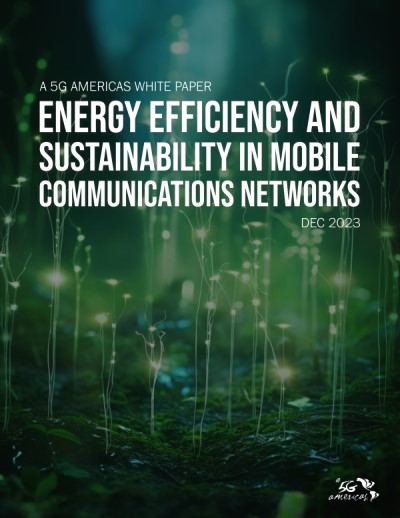Energy Efficiency and Sustainability in Mobile Communications Networks
The whitepaper titled “Energy Efficiency and Sustainability in Mobile Communications Networks” focuses on the critical challenge of sustainability in the telecommunication sector, particularly addressing the carbon footprint and energy consumption of mobile networks. It delves into strategies and technologies essential for creating energy-efficient mobile networks and explores the integration of alternative energy solutions. The paper is particularly relevant for mobile network operators (MNOs) and vendors who are working towards aggressive sustainability targets like Net Zero emissions.
Key Sections Highlighting Energy Efficiency and Sustainability
Radio Access Network (RAN) Techniques: The whitepaper details RAN techniques aimed at reducing energy consumption. It highlights the pivotal role of AI/ML in optimizing these techniques, such as dynamic network parameter adaptations in response to traffic variations, to achieve energy savings without compromising user experience. AI/ML technologies are integral in predicting network loads and implementing energy-efficient measures like sleep modes and traffic offloading.
System Architecture Enablers: This section analyzes elements like network slicing, virtualization, and Open RAN. These technologies contribute to energy efficiency by enabling more flexible and scalable network architectures. The paper includes case studies demonstrating how small cell rollouts and indoor solutions, aligned with these architectural elements, lead to more sustainable networks. This includes examining how network slicing can efficiently manage energy usage across different network layers.
Application Layer Optimizations: The paper focuses on optimizing the application layer to reduce traffic volumes, thereby decreasing energy usage, especially in the RAN. By implementing efficient data handling and transmission protocols at this layer, substantial energy savings can be achieved, particularly during times of low network usage.
Renewable Energy Solutions: Discusses integrating renewable energy sources, such as solar and wind power, into mobile network sites. This approach aligns with global sustainability efforts and helps reduce reliance on traditional energy sources, thereby decreasing the carbon footprint of mobile networks.
Connectivity’s Role in Ecosystem Sustainability: Explores how mobile communications, enhanced by IoT solutions, can aid other industries in achieving their sustainability goals. The paper emphasizes the broad impact of advanced connectivity in enabling energy-efficient operations across various sectors.
Strategies for Energy Efficiency: Provides insights into implementing energy-efficient operations in mobile networks, with a focus on reducing the substantial energy consumption within the RAN. It highlights how innovations in base station design and deployment can significantly lower energy use, particularly by optimizing the power consumption of radio components.
Network Deployment Options: Analyzes options like small cell densification and indoor solutions, considering their role in energy efficiency. The paper evaluates the impact of deploying small cells in dense urban environments and the challenges and opportunities presented by indoor 5G solutions like DAS and small cell technologies.
Challenges in Densification: Evaluates the difficulties associated with network densification, including managing increased handover rates and societal acceptance. The paper discusses the need for careful planning and optimization to address these challenges effectively.
Targeted Questions or Challenges Addressed
- How can energy consumption in mobile networks be reduced, particularly in the RAN domain?
- What role do AI/ML technologies play in optimizing network operations for energy efficiency?
- How can renewable energy solutions be integrated into mobile network infrastructure?
- What are the challenges and opportunities in network densification for energy efficiency?
- How can indoor 5G deployments be optimized for energy efficiency and sustainability?
Benefits of Reading the Whitepaper
- Gain insights into strategies and technologies for reducing the carbon footprint and energy consumption of mobile networks.
- Learn about the application of AI/ML in optimizing network operations for enhanced energy efficiency.
- Understand the role of renewable energy solutions in mobile network infrastructure.
- Explore the potential of network densification and indoor 5G deployments in improving energy efficiency.
- Discover the importance of RAN sharing in reducing the environmental impact of mobile networks.
In summary, the whitepaper provides a thorough analysis of indoor 5G deployment strategies and RAN sharing as sustainable solutions in mobile communications. These approaches not only enhance network performance but also significantly contribute to energy efficiency and environmental sustainability.




